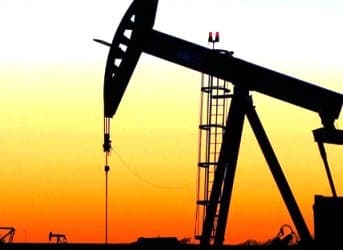Oil demand in the United States was stronger in May compared with the same time last year. The U.S. Energy Department, in its monthly report, found consumption rose for the first time in more than a year. Meanwhile, onshore activity in the United States increased in terms of drilling activity, though field production in Alaska continued to decline. With political debates stirring over the direction of U.S. energy policy, the numbers suggests a general expansion in the domestic energy sector is underway despite the rhetoric.
House leaders in July said the current 5-year lease plan outlined by the Obama administration left roughly 85 percent of offshore off limits to production. Rep. Doc. Hastings, R-Wash., said that, when Obama took office in 2009, "nearly all" of the offshore areas were open to energy production. The Energy Department's Energy Information Administration, in its latest report, shows there were 44 active rigs workings offshore on average the year Obama took office compared with 66 the previous year. The report finds, however, that drilling offshore during the first six months of 2012 increased 50 percent when compared with the same time last year. The latest EIA figures for June show there were 49 rigs in operation offshore compared with 34 at the same time last year.
That level, however, pales in comparison with the 231 offshore rigs active in 1980 when Jimmy Carter was president and one year after tensions with Iran made Middle East oil a U.S. national security priority. Onshore, while 1980 levels still outshine current totals, the number of rigs working during the first six months of the year averaged 1,936 compared with 1,744 during the same time last year. This increase was led by activity in the Lower 48 states as Alaskan field production declined to its lowest level in nearly a year. While the EIA didn't breakdown Lower 48 field production, much of that increase could be based on the oil boom under way in North Dakota.
In terms of imports, despite electioneering over the planned Keystone XL oil pipeline, Canadian oil exports into the United States dominated among non-OPEC members. For the first six months of 2012, Canadian oil exports into the United States averaged 2.79 million barrels per day, an 11 percent jump compared with the same time last year. In general, Canadian oil exports to the United States have increased annually since 1995. In terms of OPEC members, while imports from Saudi Arabia and Libya increased, on average, the reliance on OPEC oil declined from last year, according to EIA figures.
As a whole, U.S. energy production appears to be on a general upward trend despite political clamouring. In less than 100 days, U.S. voters head to their polling stations to choose their next president. Regardless of the victor, most forecasts predict "subdued" economic recovery in 2013 with modest growth in oil demand. Short-term forecasts remain vulnerable to politicking and geopolitical developments. Long-term trends, however, give credence to OPEC assessments that next year, despite the political rhetoric, will be "comfortable."
By. Daniel Graeber of Oilprice.com

















